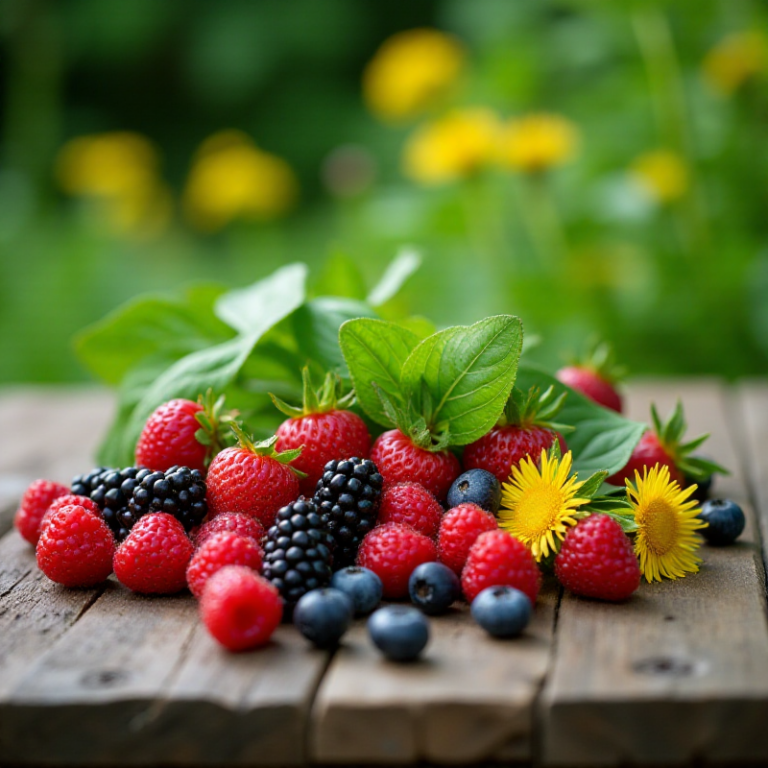Foraging is a fantastic way to connect with nature while gathering wild foods. Whether you’re hunting for edible plants, berries, or mushrooms, foraging can be an exciting and rewarding experience. However, safety is key! Knowing how to forage responsibly ensures you can enjoy the bounty of nature without putting yourself at risk.
Why Foraging Is Worth It
Foraging isn’t just about finding free food. It’s about immersing yourself in the outdoors, learning about ecosystems, and gaining self-reliance. Wild edibles can also add variety and nutrition to your meals, offering flavors and nutrients that store-bought foods can’t match.
That said, nature can be unpredictable. Without the right knowledge, you might accidentally pick something harmful. By following a few simple safety tips, you can forage with confidence.
Essential Foraging Safety Tips
1. Know Before You Go
The golden rule of foraging is this: If you’re not 100% sure what it is, don’t eat it. Many edible plants and mushrooms have toxic lookalikes, so research is your best friend.
- What to do: Bring a reliable guidebook or use apps designed for plant and mushroom identification.
2. Start Small
Begin with easy-to-identify plants, like dandelions or blackberries. As you build confidence, you can expand to more complex finds like mushrooms or roots.
- Pro tip: Forage with an experienced guide when starting out.
3. Watch for Allergies
Even safe plants can trigger allergic reactions in some people. When trying a new edible, start with a small amount to ensure it agrees with you.
4. Avoid Polluted Areas
Plants and fungi absorb their surroundings, including toxins. Avoid foraging near roadsides, industrial zones, or areas sprayed with pesticides.
5. Harvest Responsibly
Take only what you need and leave enough for wildlife and the environment to thrive. This ensures sustainability and helps maintain ecosystems.
- Pro tip: Use scissors or a knife to minimize damage to plants.
Common Foraging Mistakes to Avoid
1. Misidentification
Misidentifying a plant or mushroom is the most common mistake. Always cross-check using multiple resources.
- Example: Confusing wild garlic with lily of the valley can be dangerous, as the latter is toxic.
2. Overharvesting
Taking too much from one area can deplete resources for both humans and wildlife. Practice selective harvesting to keep nature balanced.
3. Not Checking Local Laws
Some parks or reserves restrict foraging. Check local regulations to avoid fines and ensure you’re foraging legally.
What to Bring on Your Foraging Trip
A little preparation goes a long way. Here’s what to pack:
- Guidebook or App: For plant and mushroom identification.
- Knife or Scissors: For clean harvesting.
- Baskets or Cloth Bags: Avoid plastic bags, as they can crush delicate finds.
- Notebook: Keep track of what you find and where.
- Gloves: Protect your hands from thorns or irritants.
- Snacks and Water: Stay energized during your adventure.
Beginner-Friendly Plants to Forage
1. Dandelions
- Uses: Salads, teas, or as a cooked green.
- Why it’s safe: Easy to identify and grows almost everywhere.
2. Blackberries
- Uses: Eaten fresh, in jams, or desserts.
- Why it’s safe: Thorny bushes and dark berries make them easy to spot.
3. Chickweed
- Uses: Raw in salads or sautéed like spinach.
- Why it’s safe: Grows in clusters with small white flowers, making it distinctive.
4. Wild Garlic
- Uses: Adds flavor to soups and stir-fries.
- Why it’s safe: The strong garlic smell is unmistakable.
Handling and Preparing Foraged Foods
- Wash Thoroughly: Rinse all foraged foods to remove dirt, bugs, or contaminants.
- Cook When in Doubt: Cooking can neutralize some mild toxins or bacteria in certain plants.
- Store Properly: Keep foraged items cool and dry until you’re ready to use them.
Building Confidence in Foraging
The best way to become a skilled forager is practice. Start with small outings, keep learning, and don’t rush the process. Joining local foraging groups or attending workshops can also provide valuable hands-on experience.
Foraging is more than a skill—it’s a journey into the heart of nature. By learning to forage safely, you’ll gain access to wild foods, boost your self-reliance, and build a deeper appreciation for the environment. Take your time, stay curious, and always respect the land you explore.



